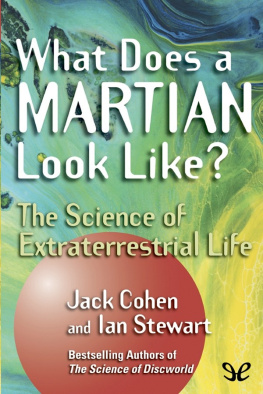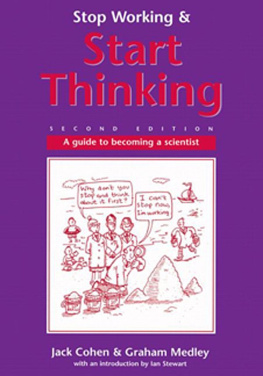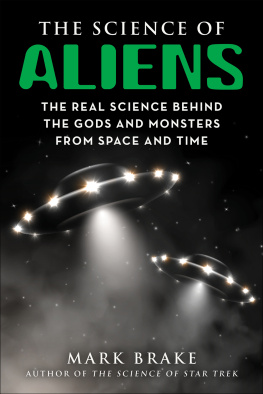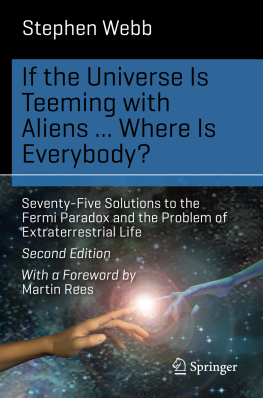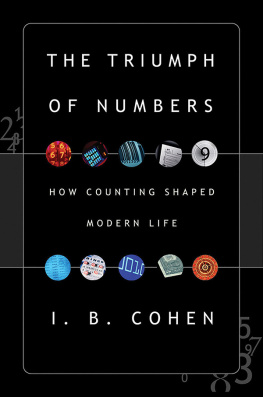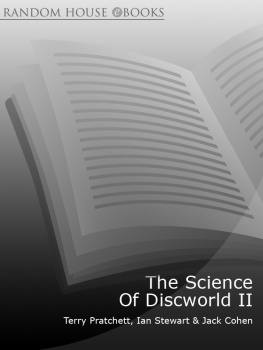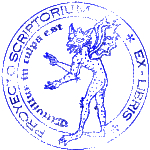
Jack Cohen & Ian Stewart
What Does a Martian Look Like?
The Science of Extraterrestrial Life
ePub r1.2
ultrarregistro 03.08.14
Ttulo original: Evolving the Alien
Jack Cohen & Ian Stewart, 2002
Diseo de cubierta: Wiley
Editor digital: ultrarregistro
ePub base r1.1
Since H. G. Wellss War of the Worlds startled Victorian sensibilities with the outlandish notion of an invasion from Mars, we have become increasingly obsessed with the possibility of extraterrestrial life. From Klingons to Ewoks to giant blobs of goo, we have imagined space aliens in every conceivable form. But if aliens do exist (and they probably do), what do they really look like? Would we recognize alien life if we saw it? Given the rules that science has devised for life on earth, can we predict how evolution might proceed in environments quite different from our comfortable air-and-water world?
In What Does a Martian Look Like?, two respected scientists and authors combine real science with the creations of some of the worlds most inventive science fiction writers to imagine how life may have evolved elsewhere in the universe. They show that the universe is not populated with countless variations on the humanoid form or horrifying creatures drawn from your worst nightmares. Instead, they demonstrate how universal principles of life might produce amazingly diverse outcomes when applied in different environments.
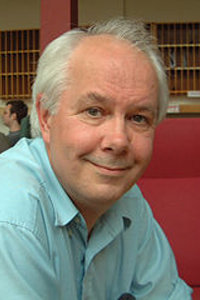
IAN STEWART. Born in 1945 in England. While in the sixth form at school, Stewart came to the attention of the mathematics teacher. The teacher had Stewart sit mock A-level examinations without any preparation along with the upper-sixth students; Stewart placed first in the examination. This teacher arranged for Stewart to be admitted to Cambridge on a scholarship to Churchill College, where he obtained a BA in mathematics. Stewart then went to the University of Warwick for his doctorate, on completion of which in 1969 he was offered an academic position at Warwick, where he presently professes mathematics.
Ian Stewart is well known for his popular expositions of mathematics and his contributions to catastrophe theory. While at Warwick he edited the mathematical magazine Manifold. He also wrote a column called Mathematical Recreations for Scientific American magazine for several years. Stewart has held visiting academic positions in Germany (1974), New Zealand (1976), and the U.S. (University of Connecticut 1977-78, University of Houston 1983-84). In 1995 he received the Michael Faraday Medal and in 1997 he gave the Royal Institution Christmas Lecture on The Magical Maze. He was elected as a Fellow of the Royal Society in 2001.
Stewart has published more than 140 scientific papers, including a series of influential papers co-authored with Jim Collins on coupled oscillators and the symmetry of animal gaits. He has collaborated with Dr Jack Cohen and Terry Pratchett on four popular science books based on Pratchetts Discworld. In 1999 Terry Pratchett made both Jack Cohen and Professor Ian Stewart Honorary Wizards of the Unseen University at the same ceremony at which the University of Warwick gave Terry Pratchett an honorary degree.

JACK COHEN. Born 19 September 1933 in Norwich, but grew up in Stoke Newington. He studied at University College, Hull, obtaining a BSc (external degree of the University of London) in 1954. He obtained his PhD in Zoology at the same institution, (by then Hull University) in 1957. He went to the University of Birmingham for post-doctoral work, and was appointed Lecturer in the Department of Zoology and Comparative Physiology in 1959. He worked for a year at Harvard Medical School, then returned to Birmingham as a Senior Lecturer in 1968, a position he held until 1987. His former students include Sir Paul Nurse winner of the 2001 Nobel Prize for Medicine. In 1974 the University of Birmingham awarded him a DSc for his work. During 1987 to 1989 he was Senior Embryological Advisor and Manager of Laboratories at the IVF/Infertility Clinic of a London private hospital. During 1995 to 1996 he was Visiting Professor at the Weizmann Institute, Israel. From 1996 to 2000 he was a consultant at the University of Warwick jointly to the Ecosystems Unit of the Biology Dept and the Mathematics Institute. He is currently an Honorary Professor at the Mathematics Institute of the University of Warwick and a Visiting Professor at Durham Business School. Cohen has published in prestigious journals such as Nature and written textbooks such as Living Embryos an Introduction to the Study of Animal Development (1967) and Reproduction (1977). His theory of sperm redundancy has been important in studies of fertility and treatment of infertility. He is a Fellow of the Institute of Biology.
Cohen has worked as a consultant for science fiction television shows and science fiction novels regarding the creation of plausible aliens. The writers who have acknowledged his assistance include Anne McCaffrey for the Dragonriders of Pern; Larry Niven, Jerry Pournelle and Steven Barnes for their Legacy of Heorot; James White of Sector General fame; David Gerrold for the Chtorr ecology; and Terry Pratchett for several works. Cohen and Ian Stewart collaborated with Terry Pratchett to write four Science of Discworld books, which accompany his Discworld series. Pratchett made them both Honorary Wizards of the Unseen University at the same 1999 ceremony where the University of Warwick gave Pratchett an honorary degree. Cohen and Stewart have also co-authored books on epistemology.
The mind, that ocean where each kind
Does straight its own resemblance find;
Yet it creates, transcending these,
Far other worlds and other seas;
Annihilating all thats made
To a green thought in a green shade.
ANDREW MARVELL, The Garden, 1652
Our biology, based on DNA and RNA and proteins, is an instantiation, a sufficient condition for Darwinian evolution. Could we now state all possible physical systems that might be capable of replication, heritable variation, and natural selection? I think not.
STUART KAUFFMAN, Investigations, 2000
PREFACE
There have been many books and television programmes about the origin of the universe, the early history of the solar system, and the origin(s) of life on Earth. They often mention the question of alien life, usually presented as life on other planets. What Does a Martian LookLike? starts from the position established by such books and programmes: that theres a big universe out there with lots of planets more or less like Earth, and lots of other interesting things like neutron stars and solar atmospheres, Black Holes and immense dust clouds in which stars are forming. It addresses questions about life in that physical universe. How likely is it for life to appear on an aqueous planet, like Earth was four billion years ago? If we wait for evolution to proceed on such a planet, or look for one thats old enough already, will we find people? Klingons? ET? Unimaginable

